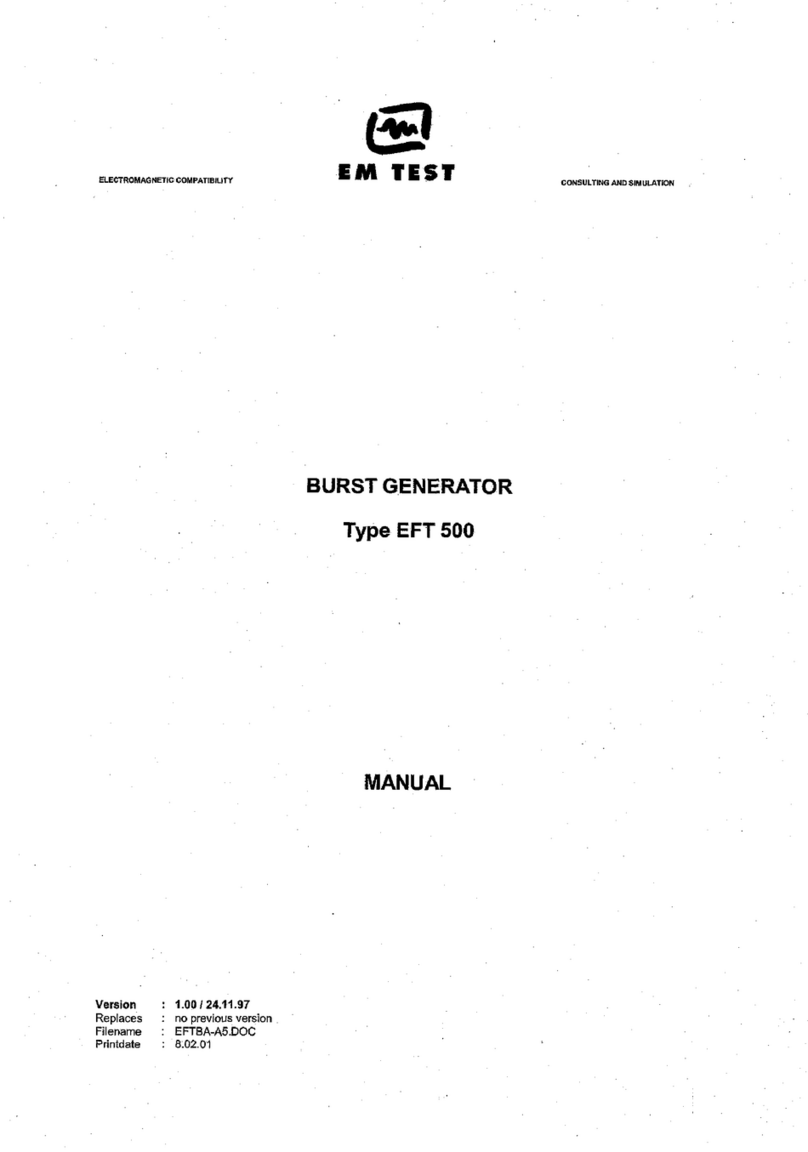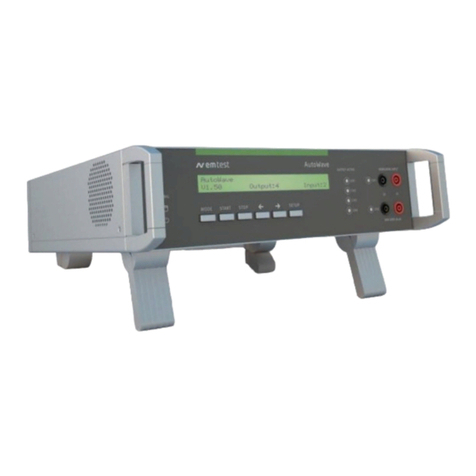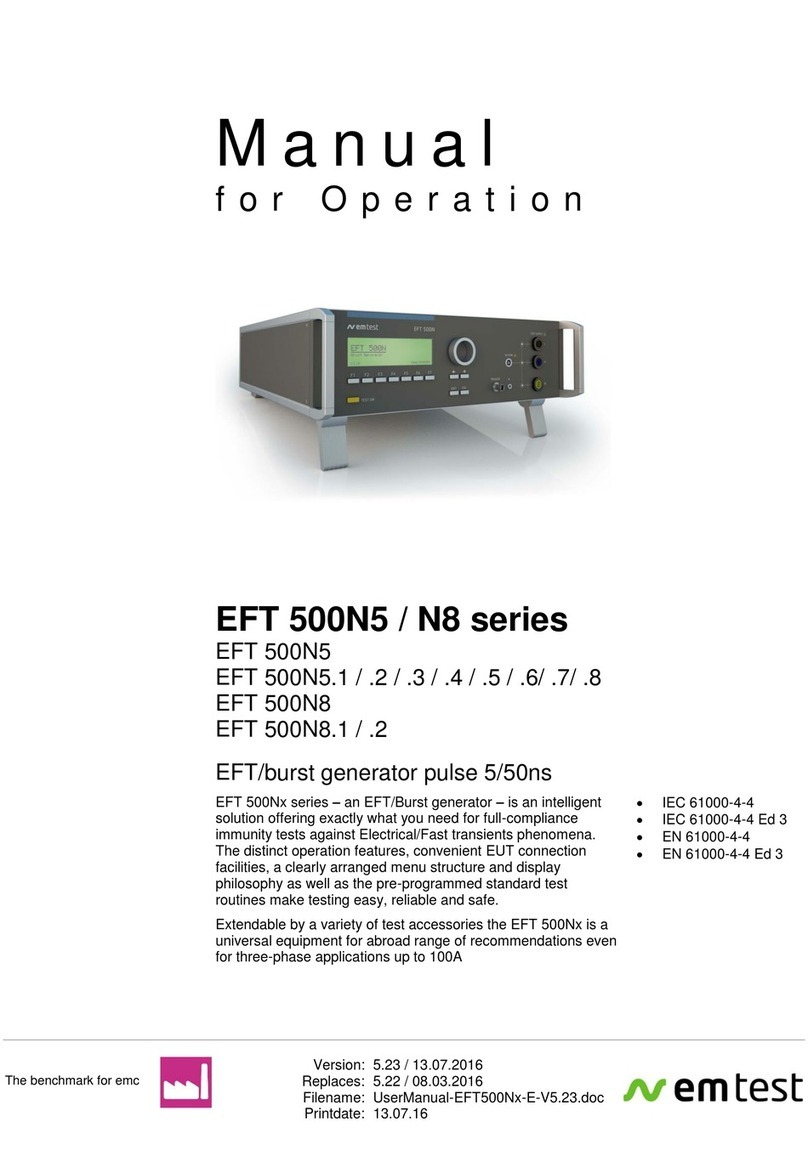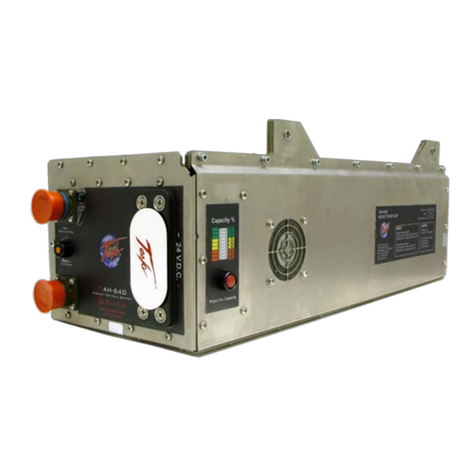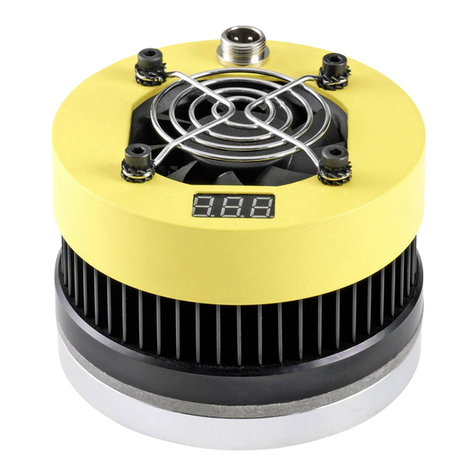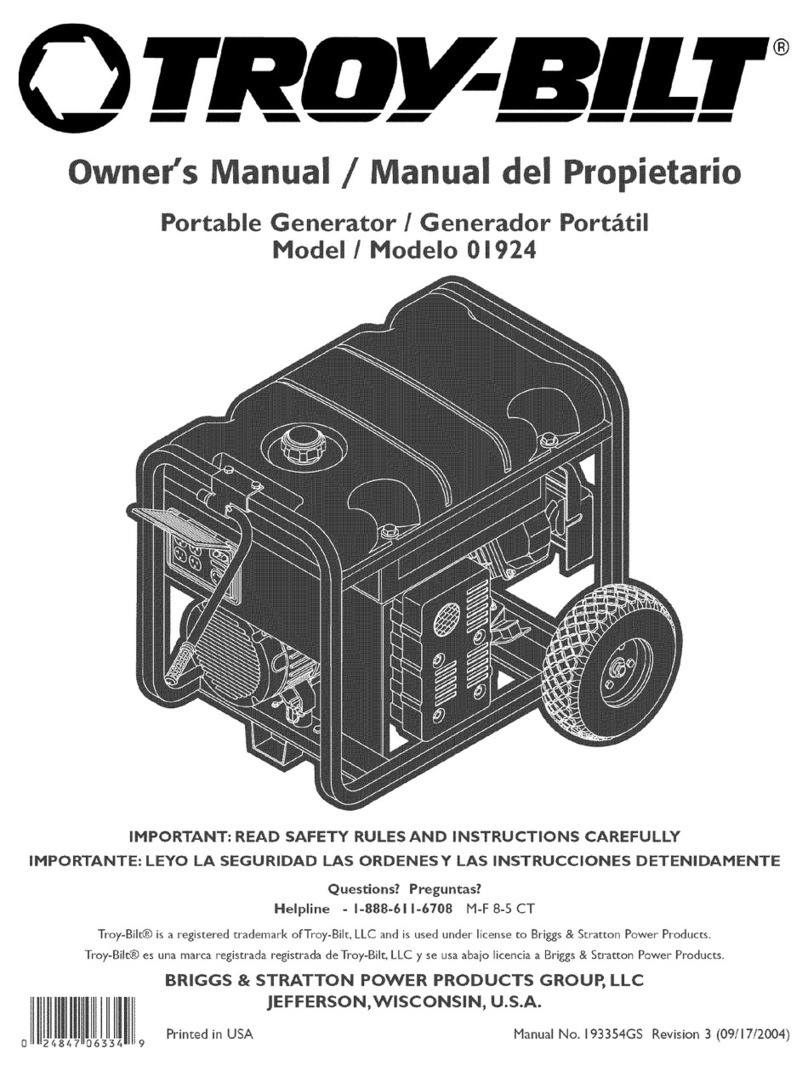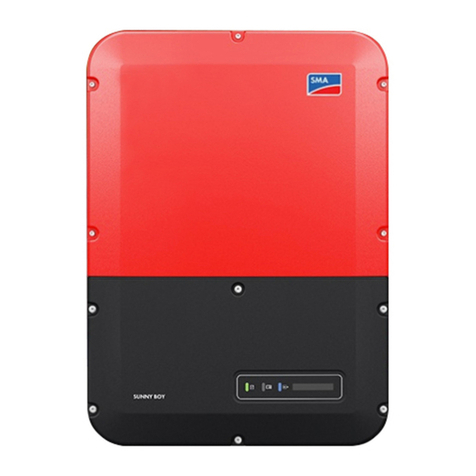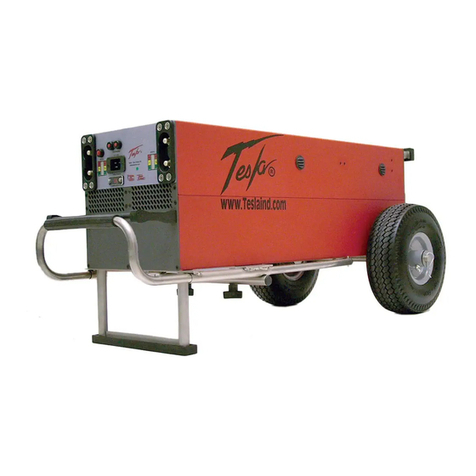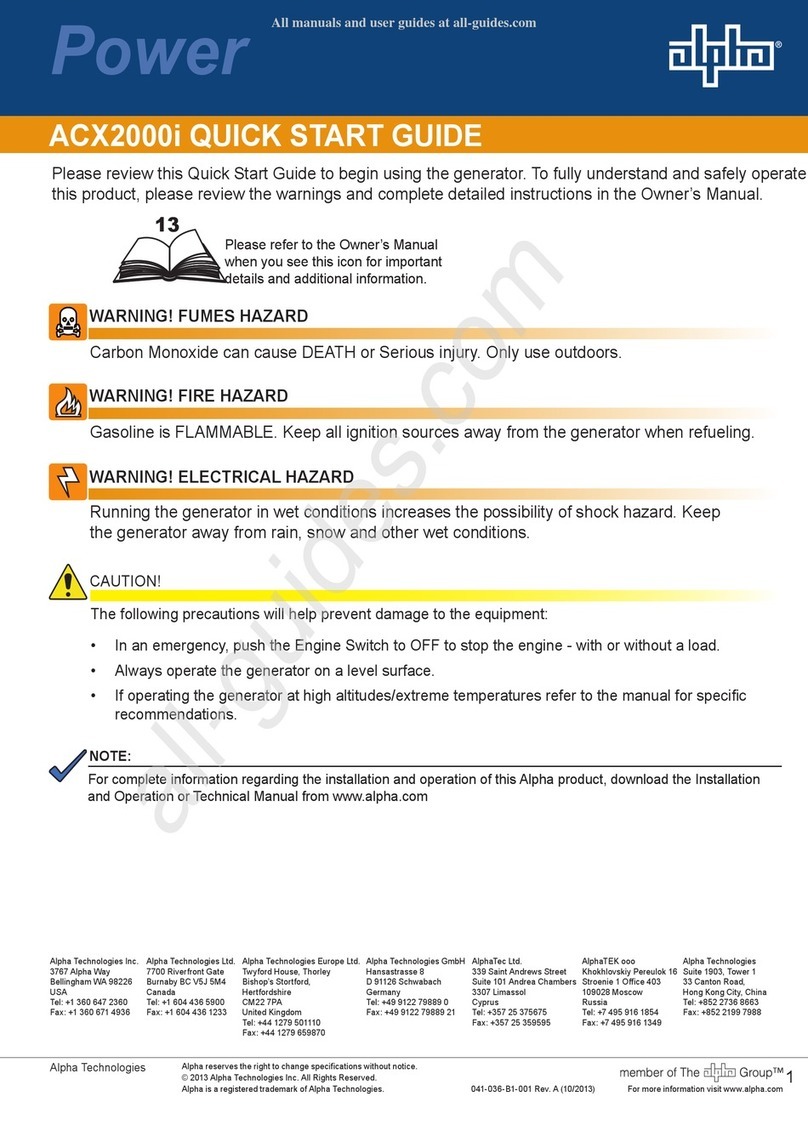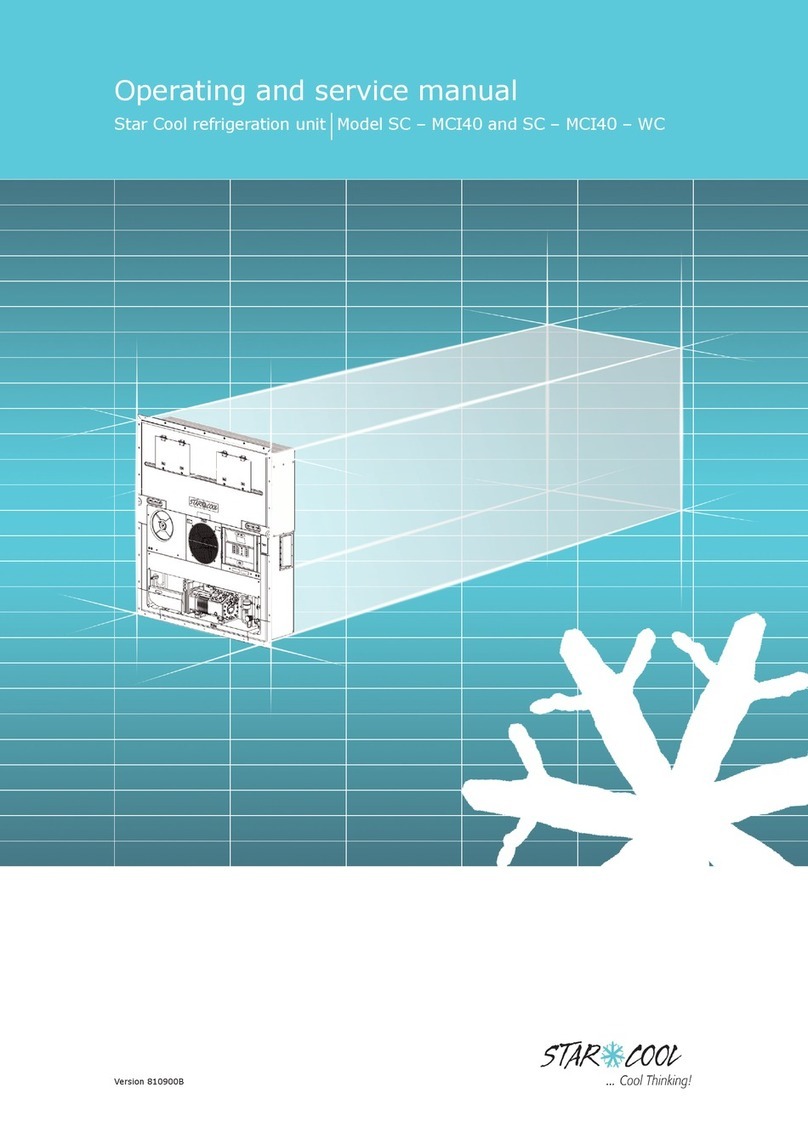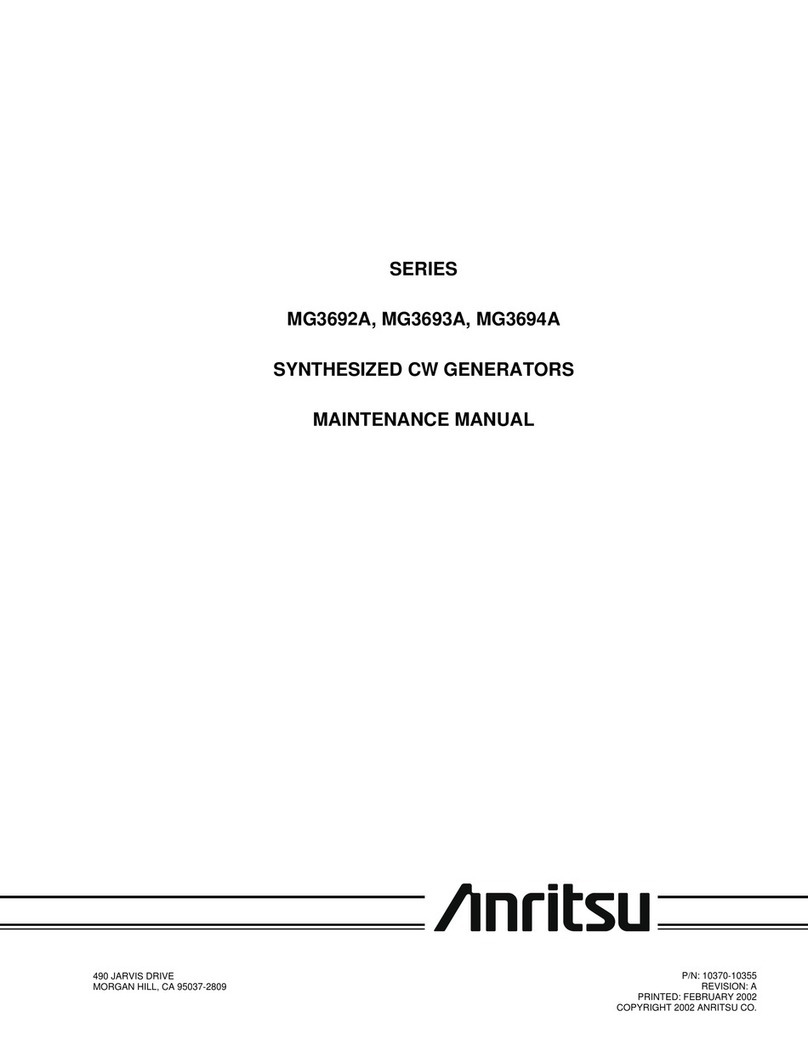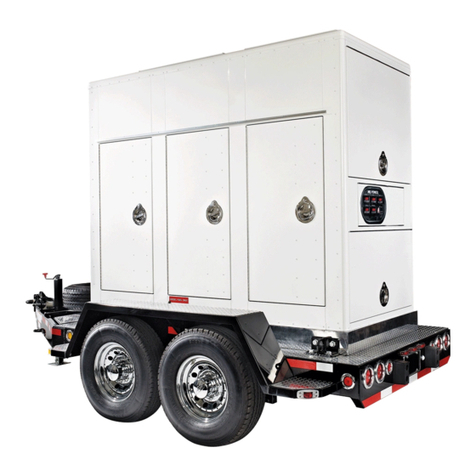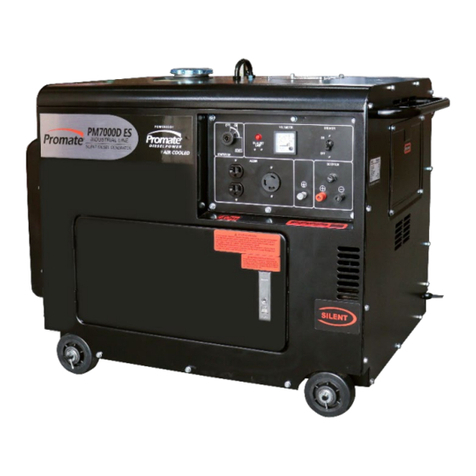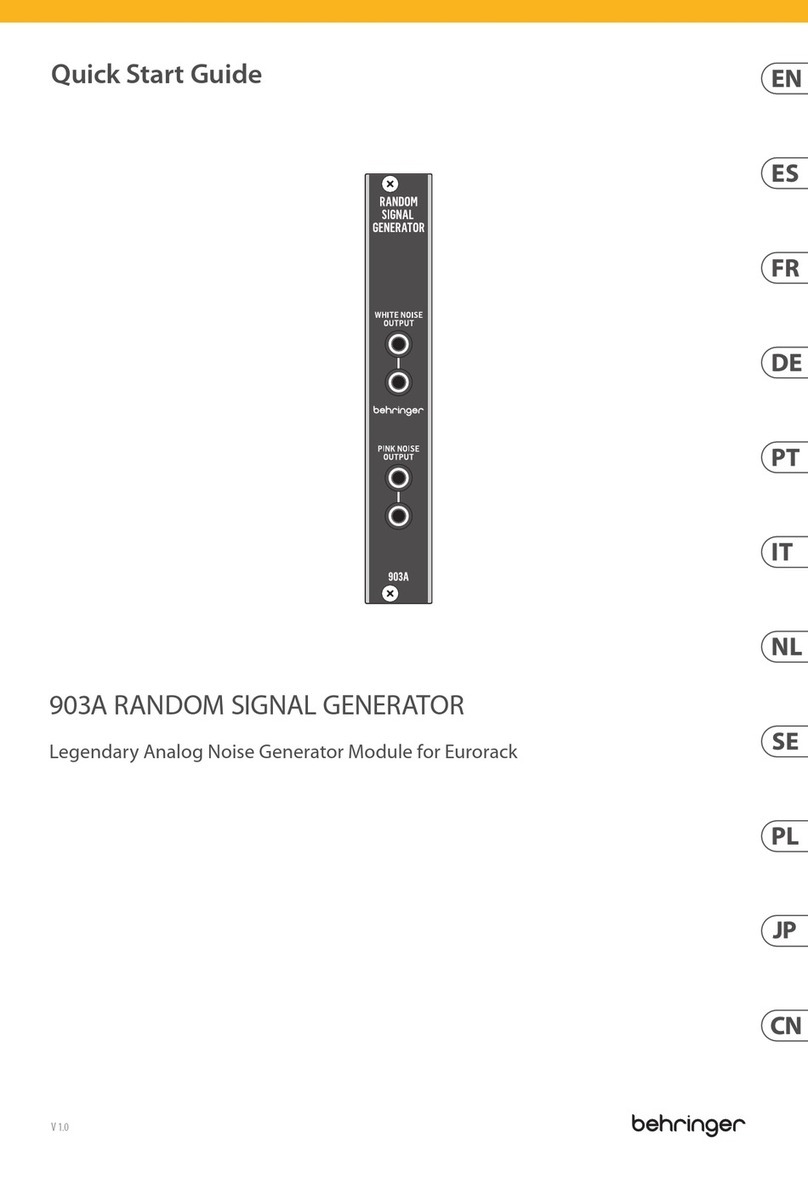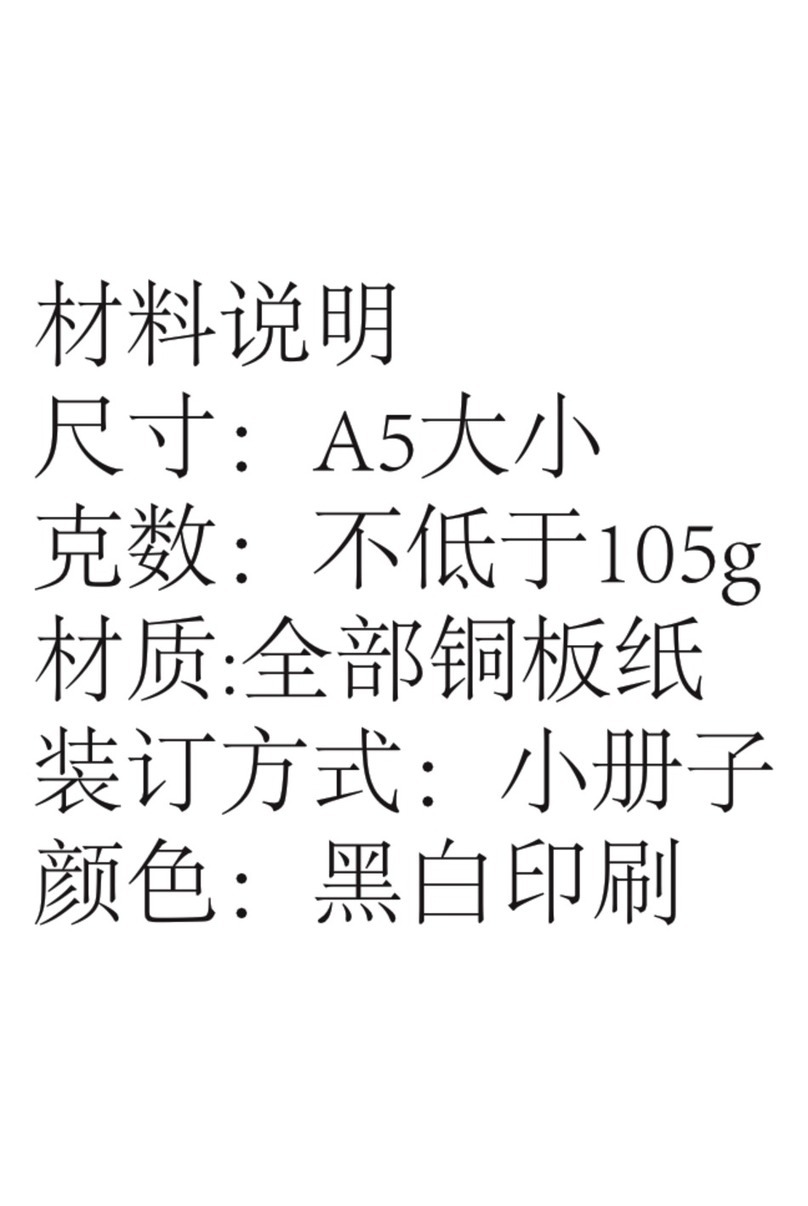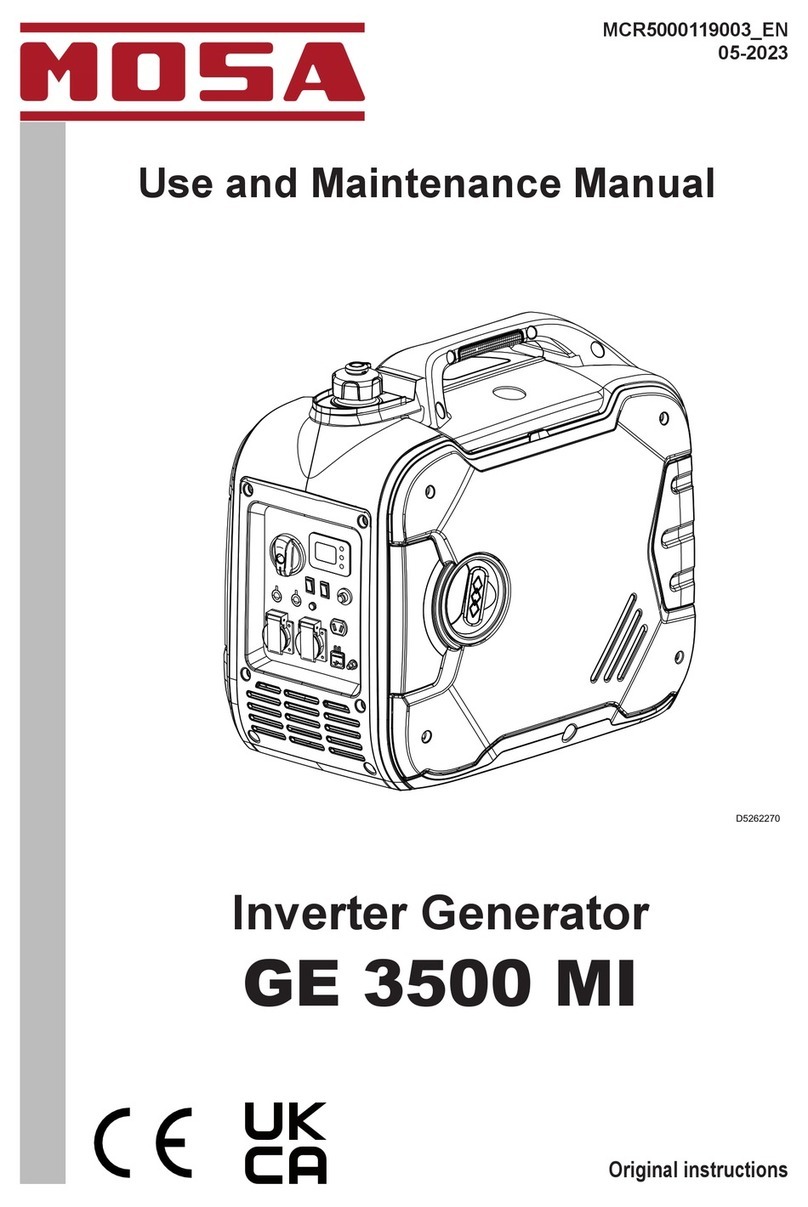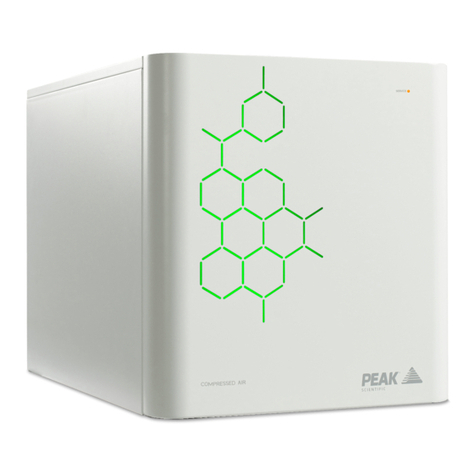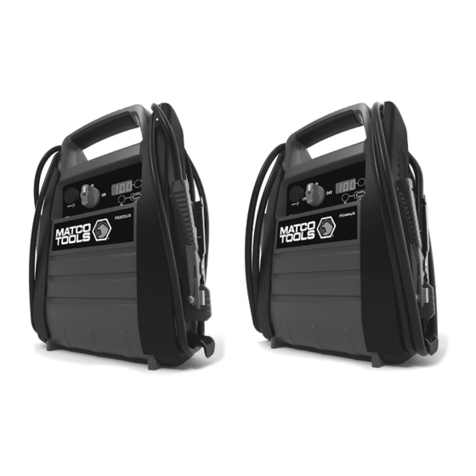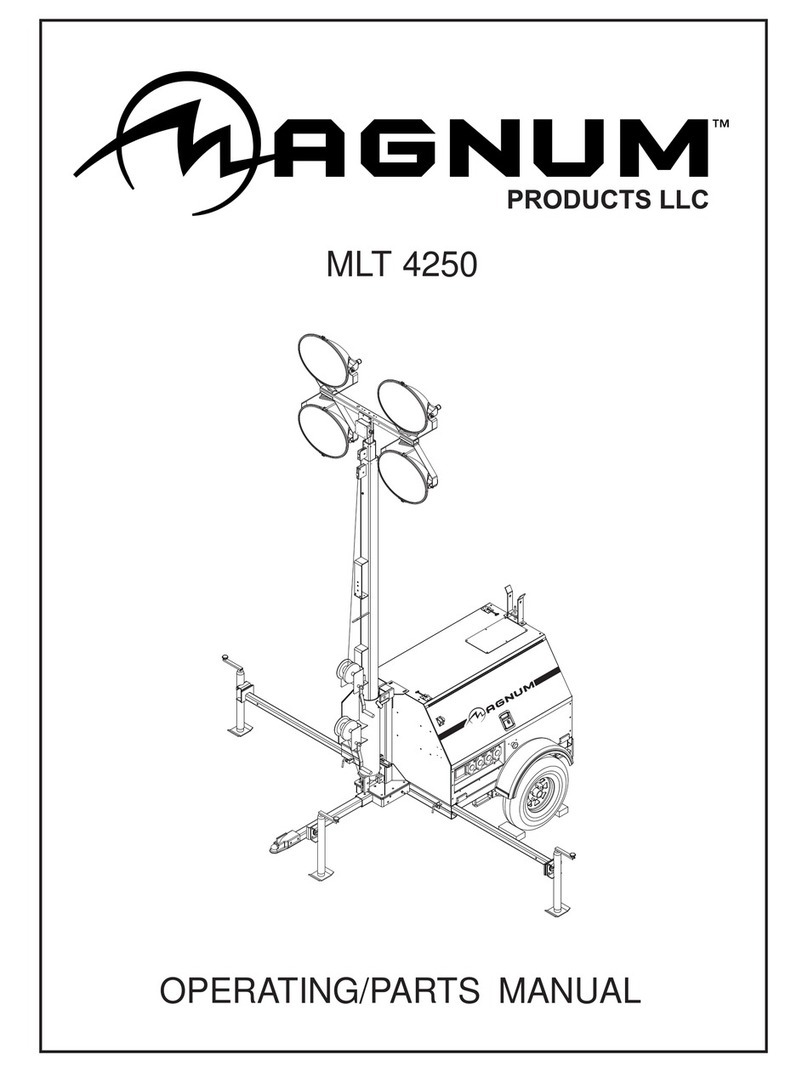EMTEST RCB 200N1 Instruction Manual

M a n u a l
F o r O p e r a t i o n
RCB 200N1
Generation of transients
by relay switching
According Ford EMC-CS-2009
This relay switching box has been designed by EM TEST to
offer a high commodity for his customers testing according the
new Ford specification.
Firmware: V2.02.01 or later
Ford
EMC-CS-2009.1
Version:
1.25 / 01.06.2017
The benchmark for emc
Replaces:
1.24 / 01.04.2016
Filename:
UserManual-RCB200N1-E-V1.25
Printdate:
01.06.17

EM TEST RCB 200N1
Manual for Operation V 1.25 2 / 26
EM TEST (Switzerland) GmbH
Sternenhofstrasse 15
4153 Reinach BL1
Switzerland
Phone : +41 61 717 91 91
Fax : +41 61 717 91 99
URL : http://www.emtest.com
Copyright © 2017 EM TEST (Switzerland) GmbH All right reserved.
Specifications subject to change

EM TEST RCB 200N1
Manual for Operation V 1.25 3 / 26
Contents
1. Standards covered by RCB 200N1.................................................................................4
1.1. General...............................................................................................................................................4
1.1.1. Basic circuit as per Ford Standard Ford FMC1278 and EMC-CS-2009 ............................................4
2. Operating Functions .......................................................................................................5
2.1. Front view...........................................................................................................................................5
3. Operation .........................................................................................................................7
3.3.1. ID........................................................................................................................................................7
3.3.2. PULSE................................................................................................................................................7
3.3.3. MODE.................................................................................................................................................8
3.4.1. Sequence............................................................................................................................................9
3.4.2. Endless...............................................................................................................................................9
3.4.3. Stop ..................................................................................................................................................10
3.6.1. Timer Reset of the End of Lifetime...................................................................................................11
4. Generator switch configuration ...................................................................................12
5. Technical data ...............................................................................................................13
5.1. Specification .....................................................................................................................................13
5.2. General.............................................................................................................................................13
5.3. P & B Relay Specification.................................................................................................................13
6. Maintenance...................................................................................................................14
6.1. General.............................................................................................................................................14
6.2. Calibration and Verification...............................................................................................................14
6.2.1. Factory calibration ............................................................................................................................14
6.2.2. Guideline to determine the calibration period of EM Test instrumentation ......................................14
7. Delivery Groups.............................................................................................................15
7.1. Basic equipment...............................................................................................................................15
7.2. Options .............................................................................................................................................15
8. Application.....................................................................................................................16
8.1. RI 130...............................................................................................................................................16
8.2. CI 220...............................................................................................................................................17
8.3. CI 260...............................................................................................................................................20
9. Waveform Verification...................................................................................................21
9.1. CI 220 Pulse verification...................................................................................................................21
9.2. CI 260 pulse verification...................................................................................................................24
9.3. RI 130 pulse verification Pulse A2-1 and A2-2.................................................................................25
10. Appendix........................................................................................................................26
10.1. Declaration of CE-Conformity...........................................................................................................26

EM TEST RCB 200N1
Manual for Operation V 1.25 4 / 26
1.
Standards covered by RCB 200N1
The RCB 200N1 is special designed for testing the Ford EMC-CS-2009 Standard. The hardware is built as
specified in the normative Annex E of the Ford EMC-CS-2009.
Ford FMC1278
-CI-220
Pulses : A1, A2-1, A2-1 & C-1, A2-2 & C-2
-RI-130
Pulses : A2-1, A2-2
Ford EMC-CS-2009
-CI-220
Pulses : A1, A2-1, A2-1 & C-1, A2-2 & C-2
-CI-260
pulse : F
-RI-130
Pulses : A2-1, A2-2
1.1.
General
The RCB200N1 is an impulse generator who generates burst pulses using mechanical contacts. The pulses are
generated by opening and closing the relays contacts (RLY1). Therefore the amplitude and waveform are
random generated by the relays contact.
The randomness is additionally influenced by the choice of modes. With the pulse selection, the tendency of
amplitude and wave shape will be influenced. This is done by different attenuation of the pulse generator and the
tap at different locations in the circuit.
The DUT is connected internally depending on the pulse selection at different points in the circuit.
The RCB have been tested and approved by Ford Motor Company and found to be acceptable for use when
performing EMC testing per EMC-CS-2009.
1.1.1.
Basic circuit as per Ford Standard Ford FMC1278 and EMC-CS-2009
Figure 1.1: Transient Generator for RI130 and CI220 as per Ford FMC1278 and EMC-CS-2009

EM TEST RCB 200N1
Manual for Operation V 1.25 5 / 26
2.
Operating Functions
2.1.
Front view
Figure 2.1
1. BAT input 13.5V ( Power supply RCB 200N1)
2. Fuse 20A
3. Ext. Trigger mode
4. Indication Relays EOL ( end of lifetime)
5. Transient Generator switching
6. Pulse C Output CI 220, CI 260
7. Pulse A, F Output CI 220, CI 260
8. Pulse Output RI 130 (BNC)
9. START / STOP ; LED endless / sequence
10. MODE selection
11. PULSE Transient pulse selection
12. ID Test selection
13. TEST ON
14. Internal Trigger OUT
15. Trigger IN
1 Battery input
Power supply input for RCB200N1 with 13.5V dc
2 Fuse
Fuse 20A for device protection
3 Ext. Trigger mode
Indication of external Trigger mode. The controller detect when the bridge between Trigger OUT –Trigger In
is disconnected. In this Mode the user has to connect an external trigger signal for relays switching.
4 Relays EOL End of Lifetime indication
The lifetime of the Potter & Brumfield relays is limited by the erosion during the bursttest. The operating
duration is limited to 100hours.
- LED blinking: Lifetime is below 10 hour.
- LED on: The test will be stopped. The user must replace the relays.
5 Transient generator switch settings
Depend on the selected pulse the Ford standard recommends to set different switches. The LED indicates
the internal relays setting according the Ford Standard
6 Pulse C output to DUT
Output plugs for testing pulses C-1 and C-2 as per CI 220
7 Pulse A, F output to DUT
Output plugs for testing pulses A1, A2-1, A2-2 and F as per CI 220 and CI 260
8 Pulse output to clamp
Output BNC plugs for testing as per RI 130. The BNC plugs are internal shorted when RI130 is not selected.

EM TEST RCB 200N1
Manual for Operation V 1.25 6 / 26
Figure 2.1
1. BAT input 13.5V ( Power supply RCB 200N1)
2. Fuse 20A
3. Ext. Trigger mode
4. Indication Relays EOL ( end of lifetime)
5. Transient Generator switching
6. Pulse C Output CI 220, CI 260 ; (B,G)
7. Pulse A, F Output CI 220, CI 260 (C,G)
8. Pulse Output RI 130 (BNC) (C,D)
9. START / STOP ; LED endless / sequence
10. MODE selection
11. PULSE Transient pulse selection
12. ID Test selection
13. TEST ON
14. Internal Trigger OUT
15. Trigger IN
9 START / STOP Button
Button for Start and Stop the test. The LED indicates the status.
- Sequence ( Test in progress)
- Endless
10 MODE Button
Button for Mode selection depend the mode definition in Ford FMC1278 and EMC-CS-2009 standard
11 PULSE Button
Pulse selection with LED indication. Cyclic selection of test procedures A1, A2-1, A2-2, (C-1), C-2, F
12 ID Button
Button for test selection cyclic rotation of the tests CI220, CI 260, RI 130
13 TEST ON Button
Button for switch on/off the power to the DUT
14 Trigger OUT (BNC)
Trigger output from the internal controller unit
15 Trigger IN (BNC)
Trigger input (E) for relays 1 trigger. Max. trigger input voltage= 35V

EM TEST RCB 200N1
Manual for Operation V 1.25 7 / 26
3.
Operation
3.1.
Power supply
The Box is powered from the BAT input13.0V (+0.5V / -1.0V). The power supply to the DUT is fused with the 20A
Fuse on the front panel.
The electronic is equipped with a reverse battery protection and will switch off automatically at approx. 18.5V
overvoltage, for protect the internal parts from overload.
3.2.
Test ON button
CI220 test
For CI 220 tests the TEST ON button will switch on the power to the DUT output
plugs.
Press the button again will finish the test (SEQUENCE or ENDLESS) automatically
and will return to STOP status.
RI 130 tests
During this test no DUT is connected to the DUT output plugs.
Therefore the TEST ON is inactive.
CI 260 tests
During this test DUTsupply voltage is switched as part of the test.
Therefore TEST ON is inactive.
3.3.
ID, PULSE and MODE settings
The edit of the following functions is only in STOP mode possible.
With pressing the button the LED display increments to the next setting. A cyclic rotation indicates all possible
settings of the selected test.
3.3.1.
ID
Identity of the used test according Ford EMC-CS-2009 standard
RI 130 : Coupled Immunity
CI 220 : Immunity from Transient Disturbances
CI 260 : Immunity to Voltage Dropout
3.3.2.
PULSE
According to the selected ID, different Pulses are available.
Pulse application depends on the selected ID. The RCB 200N1 offers only the pulse
applications, defined in the selected ID. The following pulse are offered:
CI 220: A1, A2-1, A2-1 & C-1 (Mode 2 / 3), A2-2 & C-2
CI 260: F
RI 130: A2-1, A2-2

EM TEST RCB 200N1
Manual for Operation V 1.25 8 / 26
3.3.3.
MODE
According to the selected ID and Pulse, different MODES are available.
CI 220 A1: M1, M2
A2-1: M1
A2-1 & C-1: M2, M3
A2-2 & C-2: M2, M3
RI 130 A2-1: M2, M3
A2-2: M2, M3
Mode 1
Represents a condition where the test pulse is
applied at a repetition rate of 0.2 Hz with 10% duty
cycle and 120s duration.
Figure 3.1 : Mode 1
Mode 2
Represents a condition where test pulses are
applied using pseudorandom timing sequences.
The time T is 50ms.
Figure 3.2 : Mode 2
Mode 3
Represents a condition where test pulses are
applied using pseudo- random bursts. The timing
sequence is identical as used for Mode 2.
Figure 3.3 : Mode 3

EM TEST RCB 200N1
Manual for Operation V 1.25 9 / 26
3.4.
START / STOP
With the START / STOP button the user starts and stops the test sequence. The
release of the Start button will automatically release the TEST ON function and starts
the test directly.
During running a test the following LED indicates:
LED Sequence : Test is running and stops after the test duration
LED Endless: Test is endless running. Stop with Stop button
Power on DUT
Depends on the status of the power before the test start, the voltage will be switched
off after the test. Figure 3.4 illustrate the procedure of the power on handling after
the test.
Figure 3.4: DUT power after stop
3.4.1.
Sequence
The Sequence is the normal procedure for testing any DUT according the standard.
START: Press START/STOP button for begin a test sequence
STOP: Press START/STOP button for terminate at anytime a test sequence.
After pressing the START button, the test sequence will start. The LED Sequence is illuminated and indicates the
running test. At the test end the generator returns automatically into STOP mode.
The SEQUENCE duration is defined by the Ford standard for each PULSE and MODE.
PULSE
MODE
DURATION
DURATION
RI 130 with test fixture
A1
M1
M2
120s
20s
A2-1
M1
120s
A2-1 & C-1
M2, M3
20s
A2-2 & C-2
M2, M3
20s
A2-1
M2, M3
60s
A2-2
M2, M3
60s
F
-
60s
3.4.2.
Endless
The RCB200N1 offers an option for endless testing. This can be used for long duration tests during the
development or internal quality tests.
START: Press START/STOP button during about 2s till the LED Endless illuminates.
STOP: Press START/STOP button for terminate at anytime an endless test sequence.
Application with EXTERNAL trigger signal will set the RCB200N1 automatically in “ENDLESS” mode

EM TEST RCB 200N1
Manual for Operation V 1.25 10 / 26
3.4.3.
Stop
For stop a test the user has the following options:
START / STOP button: Stops the test and the supply voltage keeps at the DUT output terminal.
In case when the TEST ON was not enabled at the test start, the DUT supply voltage will
automatically switch off.
TEST ON button: Stops the test and switches off the DUT supply voltage.
TEST OFF will stop anytime a running test and interrupt also the DUT supply voltage.
3.5.
Trigger Internal - External
The RCB 200N1 offers an internal Trigger generator for the
pulse timing. The user is free to connect his own trigger
generator for drive the Relays. The trigger input
corresponds to the input E as per Ford EMC-CS 2009
Figure F-1.
Figure 3.5 shows the two methods and connection for
generate the trigger signal for RCB200N1 trigger.
A Internal Trigger: Using the binternal trigger generator
with a bridge from Trigger OUT to
Trigger IN BNC plug.
B External Trigger:Using an external and user
programmed trigger generator device,
connected direct to the Trigger IN BNC
plug.
Figure 3.5 : Block diagram of RCB 200N1 trigger
Internal Trigger
Figure 3.6: Internal trigger
Function: Using the internal trigger, the controller sense automatically the bridge
connection from Trigger OUT to Trigger IN. The internal processor will
generate the trigger signal for relays release.
Note: Internal/External trigger detection happens with a periodic pulse train
of three short pulses (<1µs) in the trigger out signal during stop
status. When these “Phantom pulses” are received at the trigger in
side, the controller detect internal Trigger. Otherwise the Ext Trigger
LED appears.
External Trigger
Figure 3.7: External trigger
Function: An external arbitrary generator can be used for generate the trigger
signal for relays release. The input is enabled after pressing the
START/STOP button. The relays can be controlled after TEST ON or
START button.
The LED Ext. Trigger Mode indicates the disconnected internal
trigger bridge.
Remark: Lifetime is only incremented if RCB 200N1 is switched to Start in
ENDLESS Mode.

EM TEST RCB 200N1
Manual for Operation V 1.25 11 / 26
3.6.
Relays Lifetime surveillance RELAY EOL
The contacts of the Potter & Brumfield Relay (Figure 3.8) are worn heavily during the burst
operation. The operating time of the relay contacts is approx. 100h.
A built in operation-hour counter is monitoring the lifetime of the relay and indicates the
status with the LED Relay EOL “End Of Lifetime”.
Lifetime
90 h: Relay EOL LED starts to flash.
100h: Relay EOL LED lights constant. End of the operation period, the device is switched off.
Figure 3.8
External Trigger: Relays lifetime is only incremented if RCB 200N1 is switched to Start in ENDLESS Mode.
3.6.1.
Timer Reset of the End of Lifetime
The resetting of the operation-hour counter is done by pressing the
MODE and TEST ON button simultaneously with the connection of the supply voltage to the generator
(initialization).
Figure 3.9 : Text inside the RCB200N1 for reset the Timer EOL

EM TEST RCB 200N1
Manual for Operation V 1.25 12 / 26
4.
Generator switch configuration
On the front panel the status of the switches SW0 to SW4 is
indicated in the LED line Transient generator
On the front panel the status of the switches SW1 to SW4 is indicated in the LED line Transient generator
PULSE
MODE
SW1
SW2
SW3
SW4
A1
M1 M2
X
X
X
X
A2-1
M1
X
A2-1, C-1
M2
X
A2-2, C-2
M2
X
X
A2-1, C-1
M3
A2-2, C-1
M3
X
X = closed = LED for switch is illuminated
Figure 4.1:Location of switches SW0…SW4
Attention
RI 130 : Connect the Text Fixture to SINK and SOURCE
CI 220, CI 260 : Plug the BNC -Bridge

EM TEST RCB 200N1
Manual for Operation V 1.25 13 / 26
5.
Technical data
5.1.
Specification
Input voltage BAT
U = 13.0V +0.5V –1.0V ( Ford spec )
Current
20A max ± 10 %
Fuse
Blad fuse link FK 20A
Fuse voltage drop
105mV typical 125mV Max.
Power supply control
From BAT input ( reverse polarity and overvoltage protected )
Design
According Ford spec ES-XW7T-1A278-AC Annex G
Operating range
11V –15V
Inverse voltage protection
RCB200N1 will not operate at inverse voltage
Overvoltage protection
Switch off at approx 19V supply
Trigger Input
5V…12V , positive logic
Trigger frequency
Max. switching speed of P&B relays (1 cycle approx. 25ms)
5.2.
General
Dimension
330mm x 230mm x 112 mm ( L x W x H )
Weight
6.20
Temperature
23C 5.0 C
Humidity
20 to 80% relative humidity ( RH) non condensing)
5.3.
P & B Relay Specification
Figure 5.1
Manufacturer : Potter and Brumfield (P&B)
Model : KUP 14A15-12
Lifetime: max. 100 hours
Contact Arrangement:
3 Form C, 3PDT, 3 C/O
Contact Current Rating (Amps.):
10
Coil Magnetic System:
Monostable
Coil Selection Criteria:
Nominal Voltage
Actuating System:
AC
Input Voltage (VAC):
12
Coil Suppression Diode:
Without
Coil Resistance ( ):
18
Coil Power, Nominal (VA):
2.70
Mounting Options:
Plain Case
Termination Type:
.187 x .020 Quick Connect Terminals
Enclosure:
Enclosed
Contact Material:
Silver Cadmium Oxide
Approved Standards:
UL Recognized, CSA Certified

EM TEST RCB 200N1
Manual for Operation V 1.25 14 / 26
6.
Maintenance
6.1.
General
The RCB 200N1 is absolutely maintenance-free with the exception of the socked relays specified by Ford
6.1.1.
Ford EMC-CS-2009 requires exchanging the switching relay after a time of operation of 100 hours. After
this time the test duration clock appears and the Relays EOL LED starts by blinking and the test is stopped. The
relay should be exchanged by the operator.
The clock can be resetted during Test On by pressing the buttons Test On and Mode simultaneously.
6.2.
Calibration and Verification
6.2.1.
Factory calibration
Every EM TEST generator is entirely checked and calibrated as per international standard regulations before
delivery. A calibration certificate is issued and delivered along with a list of the equipment used for the calibration
proving the traceability of the measuring equipment. All auxiliary equipment and accessories are checked to our
internal manufacturer guidelines.
The calibration certificate and the certificate of compliance (if available) show the date of calibration.
The EM Test equipment are calibrated in the factory and marked with a calibration
mark. The used measuring instruments are traceable to the Swiss Federal Office of
Metrology.
The calibration date is marked. The validity of the calibration is to the responsibility
of the user’s quality system. Neither the certificate of calibration nor the
corresponding label mark any due date for re-calibration.
Example: Calibration
mark
6.2.2.
Guideline to determine the calibration period of EM Test instrumentation
Our International Service Departments and our QA Manager are frequently asked about the calibration interval of
EM TEST equipment.
EM TEST doesn’t know each customer’s Quality Assurance Policy nor do we know how often the equipment is
used and what kind of tests is performed during the life cycle of test equipment. Only the customer knows all the
details and therefore the customer needs to specify the calibration interval for his test equipment.
In reply to all these questions we like to approach this issue as follows:
EM TEST make use of a solid state semiconductor switch technique to generate high voltage transients. A
precious advantage of this technique is the absolute lack of periodical maintenance effort. In consequence
thereof a useful calibration period has to be defined based on two criteria:
- The first one is the customer’s Quality Assurance Policy. Any existent internal regulation has to be applied at
highest priority. In the absence of such internal regulation the utilization rate of the test equipment has to be
taken into consideration.
- Based on the experience and observation collected over the years EM TEST recommends a calibration
interval of 1 year for frequently used equipment. A 2-years calibration interval is considered sufficient for rarely
used test generators in order to assure proper performance and compliance to the standard specifications.
6.2.2.1.
Calibration of Accessories made by passive components only
Passive components do not change their technical specification during storage. Consequently the measured
values and the plots stay valid throughout the storage time. The date of shipment shall be considered as the date
of calibration.
6.2.2.2.
Periodically In-house verification
Please refer to the corresponding standard before carrying out a calibration or verification. The standard
describes the procedure, the tolerances and the necessary auxiliary means. Suitable calibration adapters are
needed. To compare the verification results, EM Test suggests referring to the wave shape and values of the
original calibration certificate.
All calibrations and verifications are always done without mains supply voltage connected to the coupling network
input.

EM TEST RCB 200N1
Manual for Operation V 1.25 15 / 26
7.
Delivery Groups
7.1.
Basic equipment
Pulse generator type RCB200N1
1 Blad fuse link FK 20A
Manual on USB memory card
2 x BNC Female –Female Bridge cable
Identical accessory parts are delivered only once if several devices are ordered. The delivered packing list is in
each case valid for the delivery.
7.2.
Options
Spare relays :Set of 10
Manufacturer: Potter and Brumfield (P&B)
Model: KUP 14A15-12

EM TEST RCB 200N1
Manual for Operation V 1.25 16 / 26
8.
Application
This application describes the setup as per Ford EMC-CS-2009 using the RCB 200N1 running on internal trigger.
For detailed information please refer to the Ford EMC-CS-2009 standard. There you can find the instruction for
the test requirements, test verification, test setup and test procedures.
8.1.
RI 130
These requirements are related to component immunity from wire-to wire coupling of unintended transient
disturbances. The originate of these disturbances are from switching of inductive loads including solenoids and
motors.
Mode
Pulse
60s duration
Functional Performance Status
Class A
Class B
Class C
2
A2-1
I
I
I
A2-2
I
I
I
3
A2-1
I
I
I
A2-2
I
I
I
Default test setup
Figure 8.1 : Setup for RI 130
Figure 8.2 : Setup for RI 130 RCB200N1 and test fixture

EM TEST RCB 200N1
Manual for Operation V 1.25 17 / 26
8.2.
CI 220
These requirements are related to immunity from conducted transients on power and control circuits connected
directly to the vehicle’s battery or indirectly by a switch load.
Pulses performed with using the RCB 200N1
Transient
Pulse
Application
Transient
Characteristics
Duration
Functional Performance Status
Class A
Class B
Class C
Pulse A1
Switched power supply
circuits with maximum
current <5A
Mode1
120s
II
II
II
Input circuits
Mode2
20s
II
II
II
Pulse A2-1
Pulse A2-2
Switched power supply
circuits with maximum
current <5A
Mode1
120s
II
II
II
Input circuits
Mode 2
Mode 3
20s
II
II
II
Pulse C-1
Pulse C-2
All power supply
circuits & input circuits
Mode 2
Mode 3
20s
I
I
I
Other generators must be used for perform the CI220 pulse tests: E, F1, F2, G1 and G2.
CI 220 Test setup for Devices with a single Power Supply Circuit
Figure 8.3 shows the setup for testing single DUT with power supply circuit with remote ground connection.
Figure 8.3 : Setup for CI 220 with single Power supply circuit

EM TEST RCB 200N1
Manual for Operation V 1.25 18 / 26
CI 220 Test setup for Devices with Two power Supply Connections
Figure 8.4 shows the test setup for devices with two supply circuits. The untested power supply circuit (U1) is
connected directly to the battery. If the device has an additional power supply circuits operating at the same
voltage, those circuits should also be connected directly to the battery.
Figure 8.4 : Setup for CI 220
CI 220 Test setup for Devices with Input Circuits
Figure 8.5 shows the setup for testing input circuits. The circuits may be directly or indirectly connected to
switched battery circuits.
Figure 8.5: Setup for CI 220

EM TEST RCB 200N1
Manual for Operation V 1.25 19 / 26
CI 220 Test setup Detail (Input Circuits with Remote External Pull-Up Resistor)
Figure 8.6 illustrate the special case where the control circuit is connected to the battery indirectly using a pull- up
resistor located in another module.
Figure 8.6 : Setup for CI 220

EM TEST RCB 200N1
Manual for Operation V 1.25 20 / 26
8.3.
CI 260
This test simulates momentary voltage drops, which may occur over the life of the vehicle. The purpose of this
test is the verification of controlled recovery of hardware and software from power interruptions.
IMPORTANT
Remove the BNC Bridge
SOURCE –SINK
before starting the test with Pulse CI260F
Waveform
Application
Level
Duration
Functional Performance Status
Class A
Class B
Class C
F
All power supply <5A
and input circuits
Random Bounce
60s
II
II
II
Other generators must be used for perform the CI260 pulse tests: A, B, C, D, and E.
Waveform F Random Bounce
Figure 8.7 : Waveform F
The test starts with OFF position of the power supply. The relay will bounce during 100ms before switch on the
supply. Figure 8.7 illustrate the test procedure for waveform F. At the test end the supply voltage is ON.
CI 260 Test setup for Waveform F
Figure 8.8 illustrate the setup for testing random bounce.
For this test no groundplane is mandatory.
For waveform F, measure and verify that the waveform
voltage is similar to that in figure 8.7. The measurement
shall be made with DUT disconnected from the RCB
200N1.
Note : Remove the bridge Source- Sink before the test.
If the bridge is not removed the DUT may be
overtested by transiens.
Figure 8.8 : Setup for CI 260 Waveform F
Table of contents
Other EMTEST Portable Generator manuals
